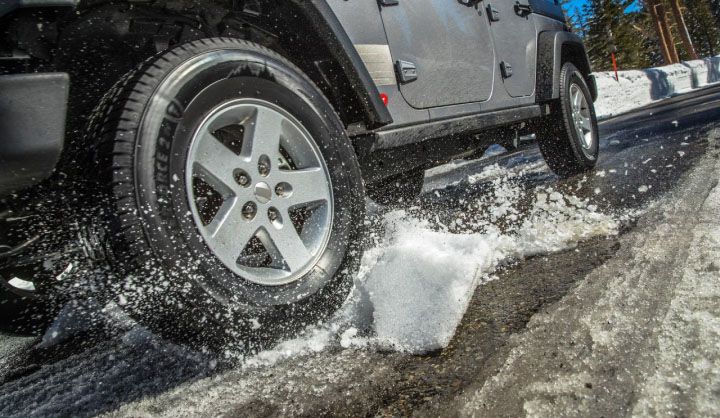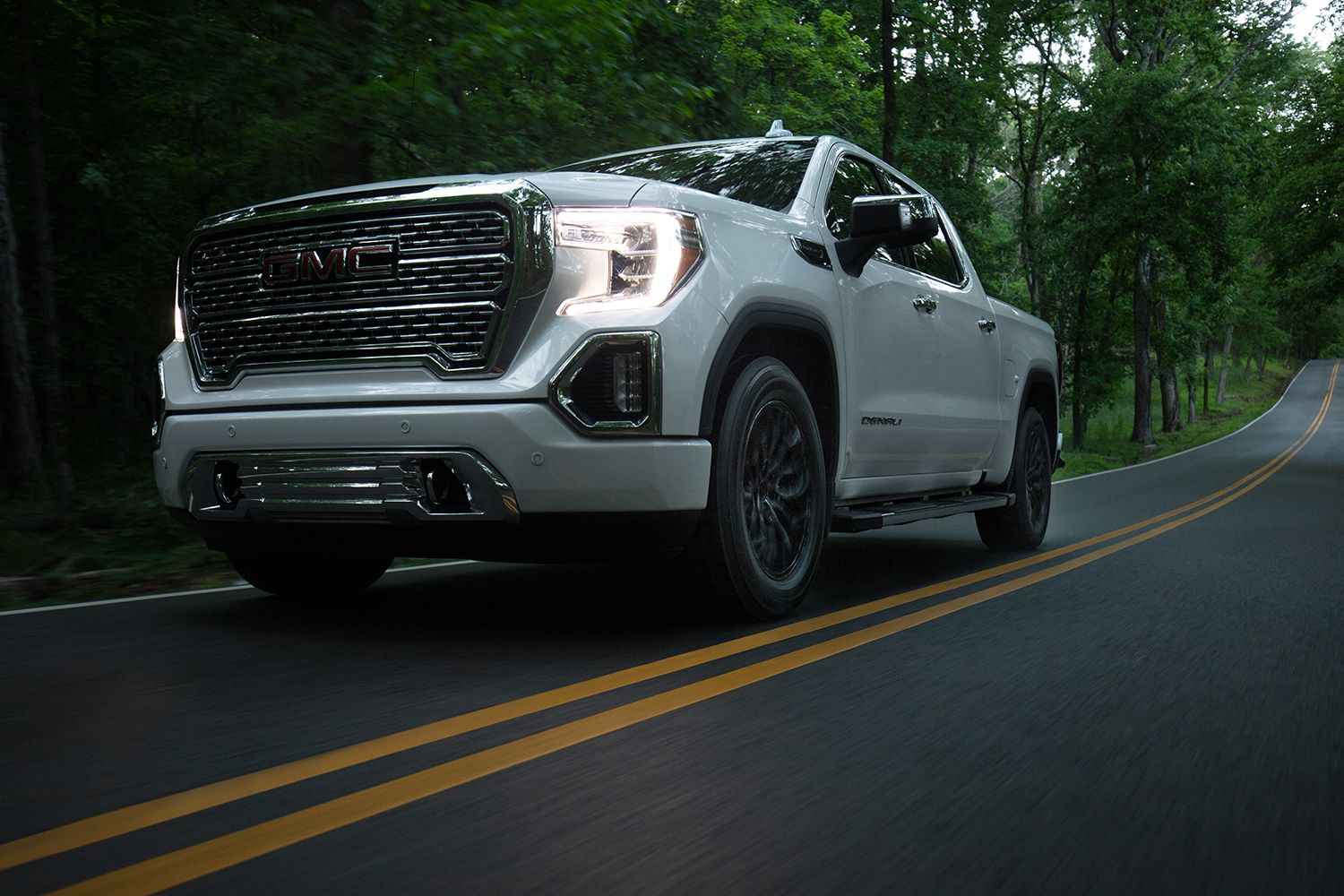With pothole season in full swing across the country, tire wobble issues are becoming more common. The good news? Most causes are fixable when caught early. Learn what causes wheel wobble, the warning signs to watch for, and how Firestone Complete Auto Care can help you stay safe and steady on the road.
What Causes Wheel Wobble in the First Place?
Tire wobble isn’t just a nuisance. It’s often your vehicle’s way of telling you something’s off under the surface. Wheel wobble can stem from several issues, many of them tied to the condition of a tire or wheel, your suspension components, or simply because it’s time for new tires.
- Pothole or curb damage: One hard impact can throw your vehicle out of alignment or bend a rim. Potholes, in particular, can lead to internal tire damage, bent wheel rims, sidewall bulges, or tire separation, any of which may cause wobbling or a wobbly sound when driving.
- Unbalanced tires: If wheel weights have fallen off or tire wear is uneven, you’ll likely feel the resulting imbalance through your steering wheel or seat.
- Bent wheels or rims: A warped or bent wheel can lead to inconsistent tire rotation. Depending on the location, this can cause a front tire wobble or rear-end vibration.
- Worn suspension components: The suspension system has several components that work together to give you a smooth ride. Over time, ball joints, tie rods, bushings, shocks, and struts degrade and lose their ability to keep your front wheels and rear wheels firmly planted.
- Wheel bearing failure: Bearings allow smooth rotation. When they wear out, they often cause vibration that worsens at higher speeds.
- Loose lug nuts: These can be a simple fix, but they pose serious safety risks when overlooked.
- Low tire pressure: Can low tire pressure cause wobble? Yes, it can. Underinflated tires don't hold their shape properly, which can lead to uneven road contact and a car shake, especially when accelerating or during turns.
- Tire Belt Separation: When a steel belt inside the tire detaches from the tire’s carcass, it can cause the tire to look deformed and cause a bump or bulge. If you notice this type of deformation, have your tires inspected immediately.
How to Identify the Type of Wobble You're Feeling
When drivers say, “It feels like my tire is wobbling at high speed,” they’re usually describing a very different experience than someone noticing it only at low speed. Both experiences point to mechanical issues, but the cause can vary.
Tire Wobble at Different Speeds
It feels like my tire is wobbling at low speed: A gentle wobble, thump, or wobbly sound when driving is often caused by a tire that's improperly balanced or worn.
It feels like my tire is wobbling at high speeds: Once you get on the highway, a vibration that intensifies often points to more serious issues like bent wheels, suspension problems, or worn bearings. This issue typically calls for an immediate inspection from a professional.
Wheel Wobble Location
- A front tire wobble is usually felt through the steering wheel and may indicate issues with front wheels, tires, tie rods, or ball joints.
- A rear tire wobble when driving can feel like the entire vehicle is vibrating, especially in the seat or floorboard, and may involve rear wheels, tires, balance issues, or suspension components.
Other Wheel Wobble Symptoms You May Notice
- Drifting or pulling to one side while driving
- Uneven tire wear
- Steering that feels loose or overly sensitive
- A persistent shake or hum that gets worse over time
- Problems during braking, which could indicate worn brake rotors working in tandem with other instability issues
Catching these wheel wobble symptoms early is key to avoiding bigger problems and ensuring your braking system and ride remain dependable.
What Happens If You Ignore a Wobbling Tire?
Many drivers try to tough out issues when their ride starts acting up. But ignoring tire wobble can set off a chain reaction of problems—many of which cost more than they would have if you’d caught them early.
- Accelerated tire wear: This can force you to replace tires sooner than expected.
- Suspension damage: Extra vibration can wear out ball joints, struts, and bushings.
- Steering instability: Reducing your ability to control the vehicle in emergency situations.
- Poor fuel efficiency: Unbalanced tires and misalignment cause your engine to work harder.
- Loose wheel: If the lugs are loose or missing, it could be very dangerous!
Don’t let your tire wobble problem escalate. Acting quickly is the best way to protect your vehicle, yourself, and other drivers.
How Firestone Complete Auto Care Can Help You Fix It Right
You don’t need to play the guessing game. At Firestone Complete Auto Care, our experienced technicians are trained to identify what’s really behind your tire and wheel wobble. We get to the root of the issue, whether it’s tire imbalance, suspension issues, brake rotors, or a combination of factors.
- Tire Balancing: If your car shakes due to uneven rotation, we’ll use precision equipment to restore balance and improve driving feel.
- Tire Repair or Replacement: We’ll inspect for internal or sidewall damage, especially if you’ve recently hit a pothole. If repairs aren’t safe, we’ll help you select the right replacement.
- Wheel Alignment Services: If your steering wheel feels off-center or your car pulls to one side, wheel alignment may be the issue.
- Suspension and Steering Inspection and Repair: Our pros are trained to spot worn ball joints, tie rods, and suspension components like shocks and struts before they lead to bigger issues.
- Full System Recommendations: We don’t just fix what’s broken. Our team looks at the whole picture—steering wheel, tires, wheel alignment, and ride quality—to make service recommendations built for your long-term safety.
Don’t Let Tire Wobble Sideline Your Drive
You take pride in your vehicle, and when something’s off, you feel it. Tire wobble, whether it’s a slight shake at low speed or a serious front-end vibration, demands attention.
At Firestone Complete Auto Care, we’re here to help you get back in control. We’ll inspect your suspension, balance your tires, and make sure everything under the hood—and under the body—is working as hard as you do.
Ready to put an end to the wobble? Schedule an appointment or find a store near you.
Tire Wobble FAQs
Q: Why is my tire wobbling at low speeds but not high speeds?
Wheel imperfections and unbalanced tires are more noticeable at low speeds. At higher speeds, the frequency may change or smooth out, though the underlying issue still exists.
Q: Why does only my front tire wobble?
Front-end wobble often points to suspension or steering component issues like worn ball joints, tie rods, or wheel bearings. Tire imbalance or rim damage is also possible.
Q: Is tire wobble dangerous?
Yes. Even if it feels manageable, it can affect safety systems like ABS or stability control and increase the risk of blowouts or steering failure.
Q: Can I drive with a wobbling tire?
You might be able to, but that doesn’t mean you should. Continued driving can worsen the damage and increase your repair bill.
Q: How much does it cost to fix a wobbling tire?
It depends on the cause. A simple rebalance might cost less than $100, but replacing suspension parts could run several hundred. The best way to find out is to have a professional inspection.
Q: Can low tire pressure cause wobble?
Yes. Low tire pressure affects shape and stability, often causing vibration or uneven tire wear that leads to wobble.



